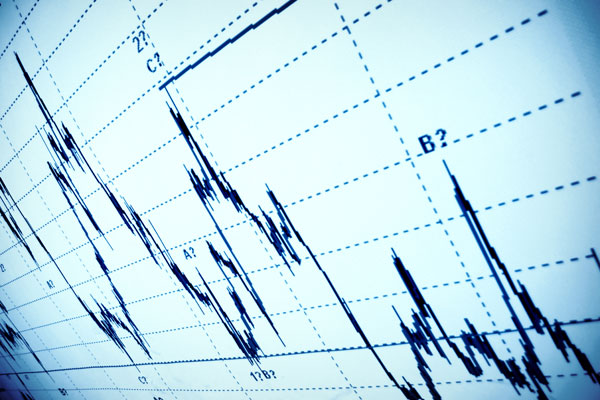
Volatility in the capital markets is a measurement of how much a security or currency pair will move or has moved. Traders use volatility as a measurement in several ways including managing risk, as well as pricing options. To evaluate volatility, traders calculate the returns on an asset, and then manipulate those numbers to determine the potential percent move on an annualized basis. There are two specific types of volatility that are used, which include implied volatility and historical volatility. While implied volatility is future volatility, historical volatility is a calculation of the actual movements of a security.
Implied volatility is the markets estimate of how much CFDs or currency pair will move in the future. This market estimate is derived from market participants and is traded like a stock or a currency pair. Implied volatility is an input that is used to price options. This is because when you buy an option, you are actually purchasing the likelihood that the option will be “in the money” on or before the expiration date
Historical implied volatility, is how much market participants believed the market would move in the future, and can easily be viewed on a chart. You can evaluate historical implied volatility in a way that is like the way you would look at historical stock prices. The VIX is a measurement of implied volatility and the CBOE offers VIX measurements on many assets including indices such as the S&P 500 index, as well as WTI oil, and currency pairs such as the EUR/USD.
The most efficient way to look at historical implied volatility is to use an index that measures the implied volatility of the “at the money” strike prices of the underlying stock or ETF, on a continuous basis. This means when an option is close to expiration, the index will switch to a new option, to generate an index that flows smoothly.
The basis for implied volatility is what is referred to as historical volatility. Historical volatility is the actual volatility that a stock has experienced over a specific period. So instead of looking at what market participants thought was going to happen, you are now looking at what happened. It is calculated by using a formula that evaluates the standard deviations of the returns of the stock over a specific period, and then multiplies that number by the square root of time. You can use historical volatility to determine the risk you want to evaluate on a portfolio. The larger the historical volatility of the instruments in the portfolio the larger the risk.
There are dozens of historical volatility calculators that you can find online, but you can also use excel to calculation it on your own. While historical volatility itself is not used to calculate the value of an option, traders do compare this to determine if implied volatility is either rich or cheap.
Generally, historical volatility and historical implied volatility move in tandem. When they diverge its usually because implied volatility is rising or falling at a much faster rate than the actual volatility of the market. Both types of volatility are used frequently by investors when trading the capital markets.



![Binance Review: How the Crypto Exchange Works [2024]](https://www.feedroll.com/wp-content/uploads/2024/03/binance-trading-100x100.png)
![Dukascopy Broker Reviews, Pros & Cons [2024]](https://www.feedroll.com/wp-content/uploads/2024/03/Dukascopy-europe-100x100.jpg)
![Plus500 Reviews: How it Works, Pros & Cons! [2024]](https://www.feedroll.com/wp-content/uploads/2024/03/plus500_-100x100.jpg)



